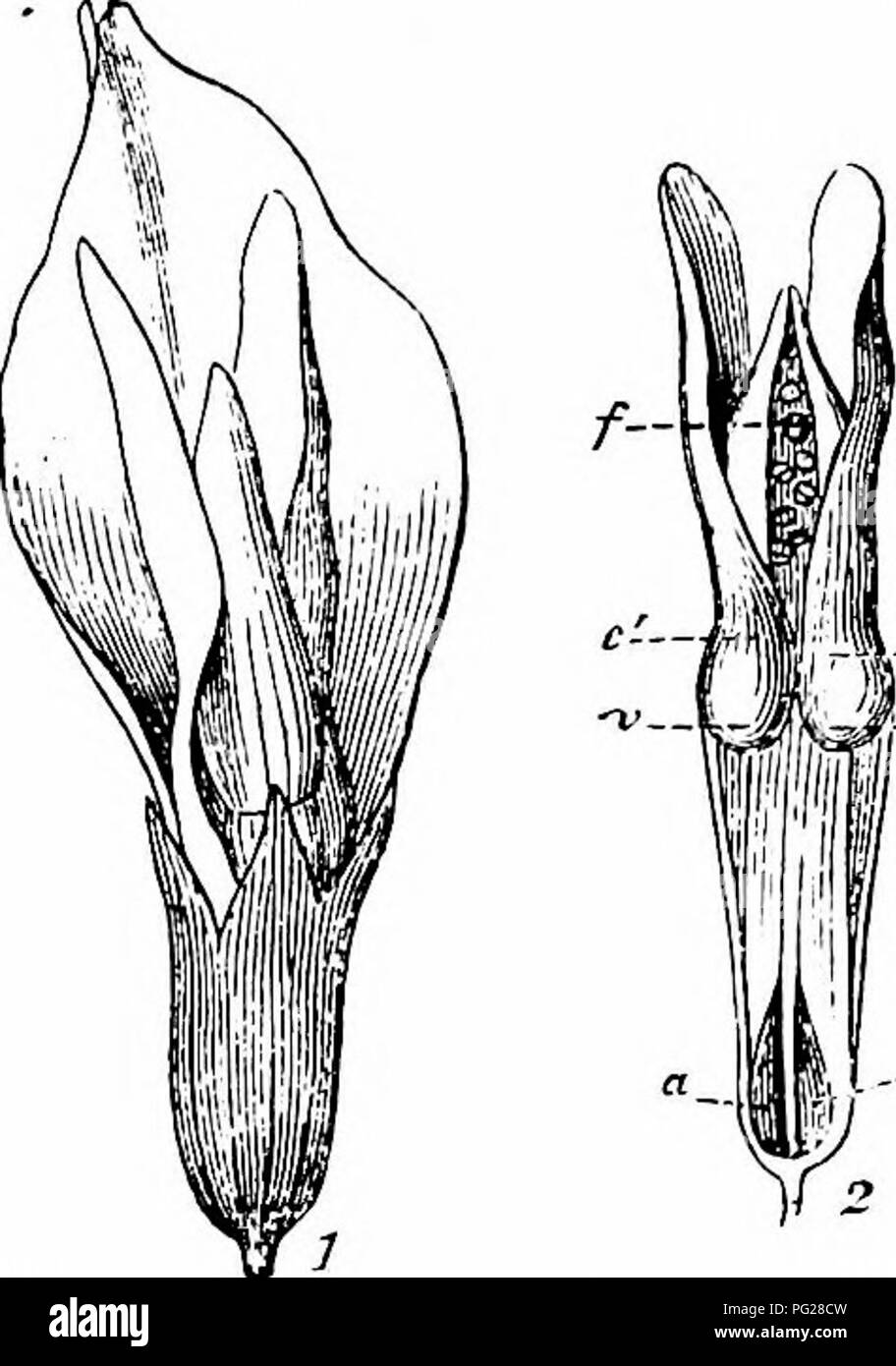. Handbook of flower pollination : based upon Hermann Mu?ller's work 'The fertilisation of flowers by insects' . Fertilization of plants. LEGUMINOSAE 285 ' Bliitenbiol. Beob. in Thiiringen,' ' Bliitenbiol. Beob. a. d. Ins. Rugen,' &c.)—The white or reddish flowers of this species smell like honey. The nectar is secreted as usual, i. e. on the inner side of the base of the staminal tube. The calyx-tube is only 3 mm. long, so that even short-tongued bees are able to reach the nectar. Hermann Miiller states that the alae are partly fused with the carina on either side, so that both move simul

Image details
Contributor:
Central Historic Books / Alamy Stock PhotoImage ID:
PG28CWFile size:
7.2 MB (259 KB Compressed download)Releases:
Model - no | Property - noDo I need a release?Dimensions:
1325 x 1887 px | 22.4 x 32 cm | 8.8 x 12.6 inches | 150dpiMore information:
This image is a public domain image, which means either that copyright has expired in the image or the copyright holder has waived their copyright. Alamy charges you a fee for access to the high resolution copy of the image.
This image could have imperfections as it’s either historical or reportage.
. Handbook of flower pollination : based upon Hermann Mu?ller's work 'The fertilisation of flowers by insects' . Fertilization of plants. LEGUMINOSAE 285 ' Bliitenbiol. Beob. in Thiiringen, ' ' Bliitenbiol. Beob. a. d. Ins. Rugen, ' &c.)—The white or reddish flowers of this species smell like honey. The nectar is secreted as usual, i. e. on the inner side of the base of the staminal tube. The calyx-tube is only 3 mm. long, so that even short-tongued bees are able to reach the nectar. Hermann Miiller states that the alae are partly fused with the carina on either side, so that both move simultaneously upwards and downwards. Their depression by the weight of a nectar-seeking insect is facilitated by the fact that the claws are very slender. These claws are fused for the most part with the staminal tube, which is cleft above. The return of the parts to their original position is chiefly due to the action of the vexillum and alae. The broad claw of the former grasps the other petals, as well as the stamens and pistil, and, owing to its elasticity, guides their bases back to the original position when the pressure is removed. The front parts of the petals, and the reproductive column, return to their places because the dorso-basal processes of the alae are converted into two elastic swellings lying close together above the staminal tube. In order to reach the nectar, an insect visitor must thrust its head beneath the vexillum, and in doing so has only the alae for a support. These and the carina are consequently pressed downwards, and the vexillum upwards, while stamens and stigma protrude from the carina. As the stigma projects some- what beyond the anthers, cross- pollination is greatly favoured. Bees alone are able to work the flower mechanism properly, so as regularly to effect cross- pollination; other visitors, e.g. Diptera and Lepidoptera, only do this occasionally. MacLeod gives a detailed account of the flower mechan- ism, which deviates in some respects fro